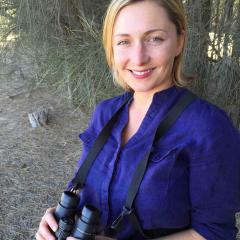Resolving development–environment conflicts is one of society’s greatest challenges. Environmental offsets – actions taken at one site to compensate for losses at another – are increasingly being used to balance society’s ongoing demand for development with the need to address its impacts on biodiversity, and offers a unique opportunity for win–win solutions for the environment and the economy.
CBCS members Professor Martine Maron, Dr Megan Evans and Professor Hugh Possingham developed a novel calculation approach for determining environmental offset requirements that has fundamentally changed the way environmental impact assessments are undertaken in Australia. Previously, biodiversity offsetting metrics encouraged biodiversity that is difficult to restore to be substituted with biodiversity that is easier to restore. Their new approach avoids this bias and allows for different species with vastly different ecological requirements to be treated equitably in offsetting schemes. Additionally, they are the first to apply the concept of ‘time discounting’ to biodiversity offsetting, which penalises offsets that take a long time to yield benefits and therefore disincentives long delays – a fact that could be critical for a species threatened with extinction. By integrating the ecological requirements of different species and ecological communities with a transparent accounting of risk, time delays and alternative future scenarios, their tool allows for rapid, transparent, robust and flexible decision support to help deal with environmental impacts.
In 2012, this novel calculation approach formed the basis of the EPBC Act Offsets Assessment Guide and is used to determine offsets for significant impacts on all nationally threatened species and ecological communities as required under Australian federal law. It has already been used to support decisions for >270 major development proposals across the mining, infrastructure and property sectors in Australia, and guides investment of many millions of dollars in environmental offsets each year.
Australia is now a leader in environmental offsets research and practice, and the work of Professor Maron’s lab is influencing biodiversity offsetting worldwide. Their offsetting decision-support tool has influenced IUCN Biodiversity Offsets Policy, the UNCCD Land Degradation Neutrality approach, and government and industry approaches internationally.


